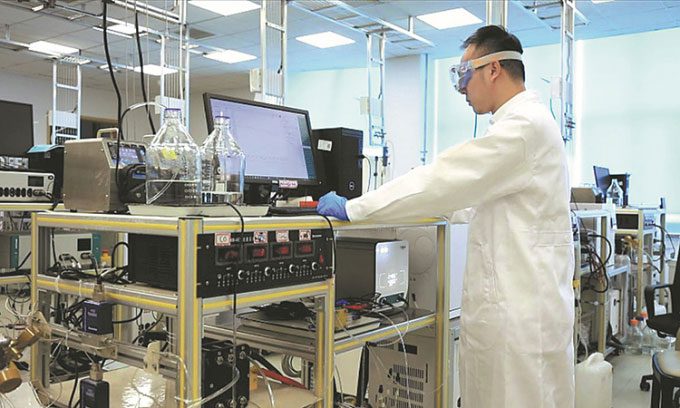Chinese scientists have discovered a mechanism to convert carbon dioxide and carbon monoxide into chemicals and fuels through the process of electrolysis.
This research, led by Professors Bao Xinhe, Wang Guoxiong, and Gao Dunfeng from the Dalian Institute of Chemical Physics under the Chinese Academy of Sciences, was published in the journal Nature Nanotechnology, as reported by China Daily on February 10.
“Electrolysis of carbon dioxide and carbon monoxide can lead to the utilization of emissions from steel mills and industrial combustion processes using fossil fuels to create high-value products, which is being researched as an effective solution to achieve carbon neutrality,” Wang emphasized. “Electrolysis is a technique that uses direct electrical current to drive non-spontaneous chemical reactions, replacing oxygen in carbon dioxide and carbon monoxide with hydrogen from water, while also allowing for their conversion into products such as ethylene, acetic acid, and ethanol.”

A member of the research team conducting electrolysis of carbon dioxide and carbon monoxide at the Dalian Institute of Chemical Physics in Liaoning Province, China. (Photo: China Daily).
The experiments in this study recorded the highest performance compared to existing literature on the process, indicating that the new electrolysis device can produce the largest amounts of ethylene, acetic acid, and ethanol from carbon dioxide and carbon monoxide per unit of time and area.
In this study, scientists examined the electrolysis of carbon dioxide and carbon monoxide using copper catalysts in the electrolysis device, an electrochemical tool that uses electricity to convert gases into multi-carbon products at high current densities.
They specifically adjusted the microenvironment of the catalyst to utilize a mixed feed of carbon dioxide and carbon monoxide, typical of the emissions produced by steel mills and fossil fuel combustion processes.
By increasing the carbon monoxide pressure, the electrolysis device began shifting from producing ethylene to acetate, significantly increasing the current density.
“This highlights the potential for adjusting the microenvironments of catalysts to selectively produce individual multi-carbon products at industrial densities. Our research has laid the technical foundation for the electrolysis of carbon dioxide and carbon monoxide from the laboratory to real-world applications,” Wang added.


















































